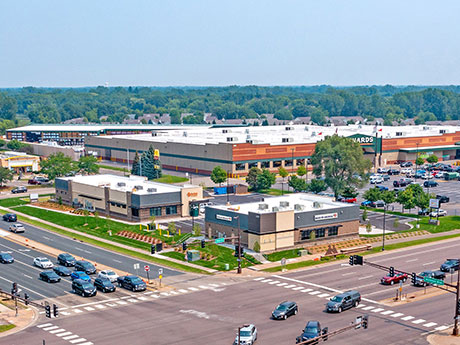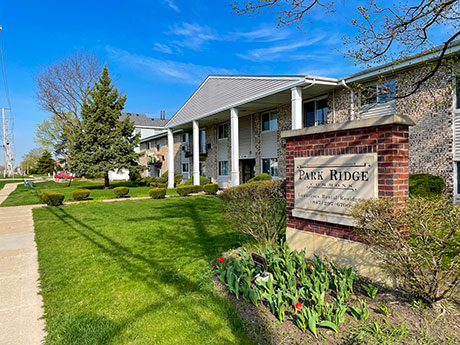By Steven Schneider, Honigman LLP While taxpayers typically pay property taxes based upon their property’s market value, assessors frequently misapply evidence or even redefine market value to rake in excessive taxes. The recently resolved Michigan Tax Tribunal case of Menard Inc. vs. City of Escanaba illustrates several of these efforts to collect excessive taxes and suggests arguments a property owner can use to challenge them. What is market value? Market value is the price that willing, knowledgeable buyers and sellers in an arm’s-length transaction would agree the property is worth. Market value differs from insurance value or replacement value because it reflects what a typical buyer would pay for a property as it is. Market value also differs from value to the owner, which reflects how a particular property contributes to the owner’s business operation. Appraisers typically determine market value using one or more of three valuation techniques. The sales comparison approach adjusts sales of similar property to indicate the likely selling price of the subject property. The income approach values property by considering the present value of the income it would likely earn if rented, whether or not it actually is rented. The cost approach values property by considering …
Heartland Feature Archive
FeaturesHeartland Feature ArchiveNortheast Feature ArchiveOtherSoutheast Feature ArchiveTexas & Oklahoma Feature ArchiveWestern Feature Archive
Forecast Survey: What’s Your Take on Commercial Real Estate in 2023?
by John Nelson
The editors of REBusinessOnline.com are conducting a brief online survey to gauge market conditions in 2023, and we welcome your participation. The survey should only take a few minutes to complete. Questions range from property sectors that you are most bullish on heading into 2023 to trends in deal volume to your outlook for interest rates. The results of our 12th annual survey will be collated and published in the January issues of our regional magazines. Conducting these surveys is part of our mission at France Media to provide readers with indispensable information, and we couldn’t do it without your help. To participate in our broker/agent survey, click here. To participate in our developer/owner/manager survey, click here. To participate in our lender/financial intermediary survey, click here. (Note: Please remember to click on “done” to properly submit the survey.)
CHICAGO — As shovel-ready projects get put on hold, seniors housing developers are looking 24 months ahead, hoping that by then the economic outlook will have improved. For now, they worry about a possible recession and rising costs for everything from debt financing to building materials as they turn their immediate focus to repositioning opportunities. “The industry has been hit with macro-economic shocks,” said Adam Heavenrich, managing director at Heavenrich & Co., a Chicago-based investment brokerage firm. “What you hear is that if you’re developing now, you’re crazy.” Heavenrich gave these opening remarks as moderator of a panel discussion on development at France Media’s sixth annual InterFace Seniors Housing Midwest conference, held Oct. 20 in Chicago. The day-long event featured six panel discussions on topics relevant to industry stakeholders, along with networking opportunities. The development panel included experts who analyzed the smartest plays for the upcoming year. They recounted a growing list of barriers to new construction. The industry is still clawing its way back from the occupancy declines due to the pandemic. Seniors housing occupancy stood at 82.2 percent at the end of the third quarter of 2022, according to data analytics firm NIC MAP Vision. Inflation, last pegged …
By Kristin Hiller The combination of a spike in material costs, disruptions in the supply chain and a lack of available workers has created a difficult building environment for general contractors. “It’s no secret that there are pressure points on our industry right now,” says Kinjal Patel, general manager and senior vice president for Lendlease Construction in Chicago. “The challenges we’ve faced the last couple years around supply chain disruption and rising materials and labor costs have only escalated, making planning and budgeting for projects incredibly unpredictable. In some cases, increases are as high as 10 percent in a span of just six months.” Despite these challenges, general contractors maintain robust pipelines and anticipate that this year’s revenues will exceed last year’s totals. “Last year, there was a lot of uncertainty as we were still in the process of rebounding from COVID, and construction deals were just finding their legs,” says Michael Meagher, president of Chicago-based McHugh Construction. “Our backlog today is better than the corresponding time a year ago as deals have continued to push forward. We forecast 2022 to be a better year for us than 2021.” Meagher anticipates that McHugh’s revenues will be more than 30 percent …
By Kristin Hiller As the nation emerges on the other side of the pandemic, the retail and restaurant industries are tasked with adapting their store designs and business models to match consumer behavioral shifts. Shoppers and diners alike want to make purchases easily with multiple options for ordering and pickup. Border Foods, one of the largest privately held Taco Bell franchisees in America, enlisted the services of Minneapolis-based design consultancy Vertical Works Inc. in 2020 to create a new restaurant design. The result was Defy, a two-story concept with four drive-thru lanes situated below the restaurant kitchen. The 3,000-square-foot restaurant, which is located in the Minneapolis suburb of Brooklyn Park, recently opened. Josh Hanson, founder and CEO at Vertical Works and WORKSHOP, says his team set out to reimagine the drive-thru experience and create a concept that would solve many of the issues related to traditional drive-thrus. “By elevating kitchens and operations and adding multiple drive-thru lanes underneath, the Defy concept is able to increase efficiency and profitability within the same footprint and at the same cost as a traditional drive-thru,” he states. Defy customers will be able to place orders online via the Taco Bell app or traditionally …
While 2021 was a record year for multifamily investment sales, brokers see no sign of a slowdown. Some dealmakers anticipate that 2022 could be an even bigger year. In 2021, U.S. multifamily property and portfolio sales nationally totaled $335.3 billion, up 128 percent over the prior year, according to Real Capital Analytics. In 2021, Chicago-based Interra Realty sold or put under contract more than $527 million of apartment properties on behalf of clients, representing just under 3,000 units. Brad Feldman, senior managing partner, says that while some of those transactions carried into 2022, the total amount sold or under contract so far this year is more than 83 percent of the 2021 sales total. In one particular deal in 2021, Feldman represented a family trust in its sale of a Chicago multifamily property for the first time in 50 years. Situated in the city’s Lakeview neighborhood, the building features 21 apartment units and two commercial spaces. A private buyer paid $5.2 million for the asset and plans to renovate the units, hallways and common areas. Feldman completed about 30 showings and received more than six written offers. While today’s market tends to favor sellers, both sides of the transaction are …
Company NewsFeaturesHeartland Feature ArchiveHospitalityIndustrialMixed-UseMultifamilyNortheast Feature ArchiveOfficeRetailSoutheast Feature ArchiveTexas & Oklahoma Feature ArchiveWestern Feature Archive
Forecast Survey: What’s Your Take on Commercial Real Estate in 2022?
by John Nelson
The editors of REBusinessOnline.com are conducting a brief online survey to gauge market conditions in 2022, and we welcome your participation. The survey should only take a few minutes to complete. Questions range from property sectors that you are most bullish on heading into 2022 to trends in deal volume to your outlook for interest rates. The results of our 11th annual survey will be collated and published in the January issues of our regional magazines. Conducting these surveys is part of our mission at France Media to provide readers with indispensable information, and we couldn’t do it without your help. To participate in our broker/agent survey, click here. To participate in our developer/owner/manager survey, click here. To participate in our lender/financial intermediary survey, click here. (Note: Please remember to click on “done” to properly submit the survey.)
Content PartnerDevelopmentFeaturesHeartland Feature ArchiveHospitalityIndustrialLeasing ActivityLee & AssociatesMarket ReportsMidwestMultifamilyNortheastNortheast Feature ArchiveOfficeRetailSoutheastSoutheast Feature ArchiveTexasTexas & Oklahoma Feature ArchiveWesternWestern Feature Archive
Lee & Associates Breaks Down Third-Quarter Economic Outlook by Sector
The calculus for which asset classes are likeliest to demonstrate strong growth continues to shift as the pandemic appears to be receding. Patterns in labor shortages, supply chain issues and material costs have managed to solidify through the third quarter of 2021. Lee & Associates’ newly released Q3 2021 North America Market Report dissects third-quarter 2021 industrial, office, retail and multifamily findings, with a focus on where demand is moving and the challenges facing each asset class. Lee & Associates has made the full market report available at this link (with further breakdowns of factors like vacancy rates, market rents, inventory square footage and cap rates by city). Below is a bird’s-eye overview of four commercial real estate asset classes as general categories, broken down to frame each through the trends and complications they faced up to the fourth quarter, according to Lee & Associates’ research. Industrial: Q3 Posts More Record Demand Pandemic-fueled consumer spending drove up third-quarter demand for warehouse and distribution facilities that eclipsed previous records. And despite a nationwide surge in new construction, some metros can barely accommodate the pace of tenant expansion. Additionally, year-over-year rent growth is at a record 6.7 percent for the industrial property sector …
Construction projects are taking longer to complete and costing more to build than they did prior to the COVID-19 pandemic. The supply of available materials dried up considerably during the pandemic due to shutdowns and social distancing requirements, which reduced capacity at manufacturing plants. Those supplies continue to be constrained, and lead times for receiving materials are massively elongated. For example, when placing orders for roofing insulation, builders can now expect a 180-day lead time versus just two weeks pre-pandemic, says Todd Sachse, CEO and founder of Detroit-based Sachse Construction. Open web steel joists now have a lead time of 35 to 45 weeks when previously they were available in four to six weeks. Even getting standard paint has been an issue, according to Sachse. The cost of lumber has come down to $399 per thousand board feet after spiking to an all-time high of $1,515 in May, according to Fortune. But there are still price hikes on shipping costs or items like glue, says Sachse. “These price hikes have cancelled projects, put some on hold and have placed a strain on subcontractors and trade partners who did not procure materials quickly and are not able to recoup the differences.” …
Earlier this year, national real estate investor and operator Waterton closed fundraising activity for a multifamily value-add fund with $1.5 billion in equity commitments from global institutional investors. Waterton launched the fund, known as Waterton Residential Property Venture XIV, in May 2020. The first deployment from the fund was a four-property, 1,824-unit portfolio in metro Atlanta followed by a two-property portfolio in Hawaii and three assets in California. The largest-ever fund from Waterton will continue to target both urban and suburban assets in major U.S. markets. The value-add investment strategy is nothing new for Waterton. The Chicago-based company has taken this approach for the last 25 years. But today there is strong demand among investors to be in the multifamily sector, says Rick Hurd, chief investment officer. As a result of the COVID-19 pandemic, some acquisitions are what Hurd calls “urban distress.” In other words, Waterton is making investments in areas like downtown Los Angeles and San Francisco in anticipation that demand will come back to the urban core over the next couple years. Many renters have migrated to the suburbs during the pandemic to be away from densely populated areas. According to Hurd, there is currently significant demand for …










